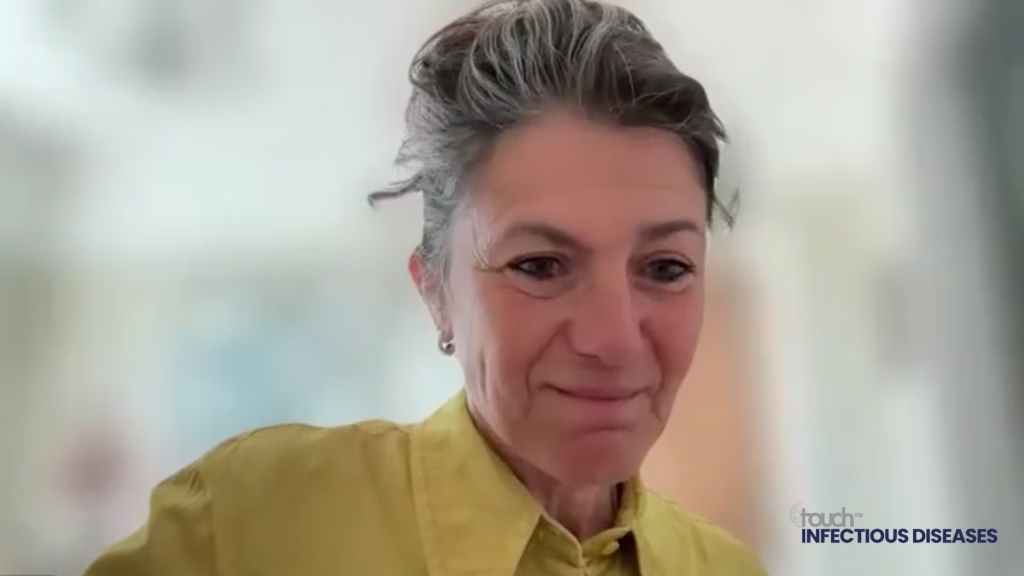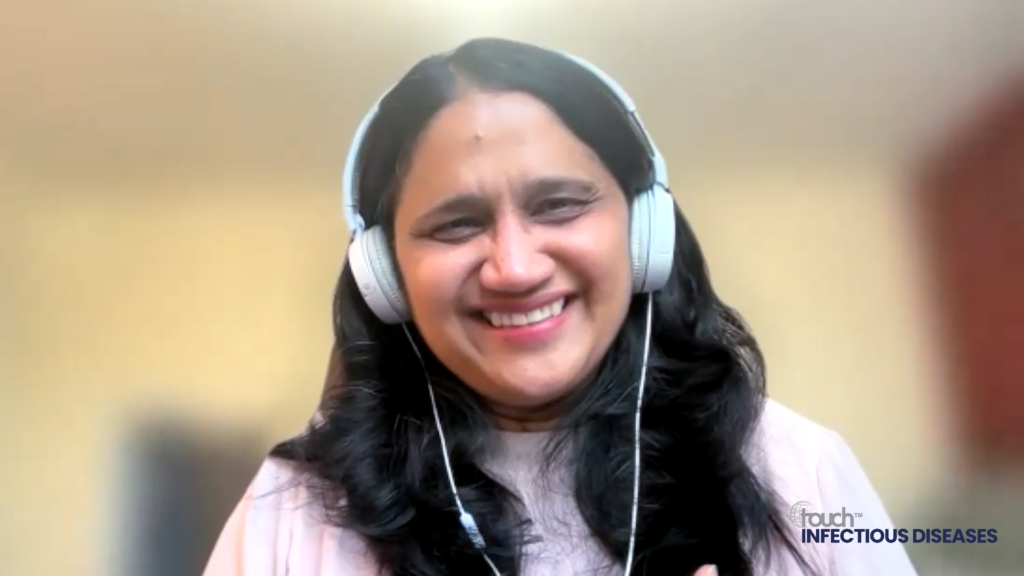touchINFECTIOUS DISEASES coverage of data presented at CROI 2024
HIV diagnostic technologies have surged in development post-COVID-19, highlighting the essential role of diagnostics in controlling pandemics. Dr Nitika Pai, Division of Clinical Epidemiology, Experimental Medicine, Infectious Disease, McGill University, Montreal, Canada, discusses advancements in HIV diagnostics, especially self-testing, which has increased the acceptance and implementation of HIV self-tests globally. HIV diagnostics, leading in rapid and self-testing innovations, are pivotal in managing the HIV pandemic. Today, the array of diagnostic options are vast and still growing—rapid tests, self-tests, nucleic acid tests (NATs), and digitally integrated solutions are quickly being utilized worldwide. However, cost and adherence to World Health Organization (WHO) and Centers for Disease Control and Prevention (CDC) guidelines remain challenges.
Dr Pai also emphasizes the crucial role of HIV testing, as a potential gateway to controlling the HIV pandemic, pointing to the UN’s 95-95-95 targets for ending HIV. Approximately 14% of individuals worldwide are unaware of their HIV status, posing a significant barrier to treatment and increasing transmission risk. Bringing these individuals into care is imperative for reducing transmissions, which are predominantly from those unaware of their HIV status or not on antiretroviral therapy.
The discussion also touches on the importance of Pre-Exposure Prophylaxis (PrEP) and the advent of long-acting PrEP medications. WHO and CDC guidelines now recommend combination tests, including p24 antigen detection, to identify HIV early. Implementing these guidelines globally, especially in high-burden countries, is crucial for early detection and treatment, and to significantly impact the pandemic’s trajectory.
Catch up: Nitika Pai discusses the evolving landscape of HIV diagnostic technologies
Disclosures: Nitika Pai has received grant/research Support from CIHR, FRSQ, and NIH.
This content has been developed independently by Touch Medical Media for touchINFECTIOUS DISEASES and is not affiliated with the Conference of Retroviruses and Opportunistic Infections (CROI). Unapproved products or unapproved uses of approved products may be discussed by the faculty; these situations may reflect the approval status in one or more jurisdictions. No endorsement of unapproved products or unapproved uses is either made or implied by mention of these products or uses by Touch Medical Media or any sponsor. Views expressed are the speaker’s own and do not necessarily reflect the views of Touch Medical Media.
Transcript:
The field of diagnostics is exploding. The reason for this is the newfound realization, post-COVID, that diagnostics are essential for understanding your serostatus, which COVID elegantly demonstrated. COVID-19 also aided HIV in some ways, particularly in the field of HIV self-testing. There was greater acceptance of COVID self-tests, and this translated to a greater acceptance of HIV self-tests. Although HIV self-tests came first, COVID self-tests truly took off internationally. Therefore, I believe there has been a rise in what I term ‘diagnostics consciousness’. People worldwide have realized that diagnostics are key.
In the realm of infectious diseases, HIV diagnostics have always led the way. Indeed, rapid diagnostics and self-tests originated from HIV. They have helped us gain a handle on the pandemic, though not fully controlled it. This progress is due to the evolution of diagnostic technologies in our space. Today, we have a plethora of options from rapid tests, self-tests, molecular NATs (Nucleic Acid Tests), to machine learning-based solutions, and digitally integrated solutions. Consequently, there is no excuse not to use quality diagnostics anywhere in the world. The reasons for non-use include absence in country algorithms, reluctance to follow WHO guidelines, or concerns over costs, which are indeed significant. I feel it is an exciting time to be in the field of diagnostics.
Let me first express why it is crucial today to be acutely aware of the need to rapidly implement new diagnostic solutions. In most parts of the world, we are talking about ending the HIV pandemic. We refer to the UN’s 95-95-95 targets. That is, 95 percent of people need to be tested so that we can control the pandemic by 2030, 95 percent of those tested need to be on therapy, and 95 percent of those on therapy should achieve virological suppression.
But the story begins with HIV testing, the gateway – it’s the Achilles’ heel, so to speak. Without testing, you cannot know anyone’s serostatus. About 14% of individuals worldwide, according to UN AIDS – in the US, about one in eight individuals, that’s 12-13%. In Canada, it’s around 10-12%. The exact number is unknown, but these are the people who do not know they have HIV. And if they are unaware they have HIV, yet we have incredible antiretroviral treatment options, these tests that can detect HIV in as little as five minutes, and molecular tests in less than an hour.
Thus, there is no reason not to get tested for HIV and not to start treatment because early treatment has consistently shown that it helps control the infection. The trajectory of lifespan is prolonged, and the course of HIV is much improved on treatment. What we really need to focus on, and those living with undiagnosed HIV and unaware, are 3 to 7 times more likely to transmit the virus. So, the focus of all agencies must be, for a long time, we focused on certain populations in HIV, but within populations, we really need to concentrate on this 14% of individuals who are in hiding, not ready to test, not ready to be linked, and those are the ones that really need to be brought into care.
So that highlights the importance of HIV testing. There was a model conducted by Fiburg years ago, predicting that 92 percent of the transmissions in the United States come from people who don’t know they have HIV, who are living with HIV, and those who haven’t decided to get onto antiretrovirals and are not receiving care. Can you imagine, 92 percent of those transmissions could be prevented if these people were brought into care?
This is extremely important in the context of HIV because those who are in contact with these individuals need to be on PrEP. PrEP is available. CROI’s discussions and the conference were all about long-acting PrEP combinations, the long-acting PrEP medication that can suppress the virus and can be administered at three-monthly intervals.
And so, that’s like a blessing, and it doesn’t happen in many infectious diseases. For HIV, this is almost like a blessing. So, what do we need to do? We need to really help get these individuals back on treatment, get tested, and get them onto therapy.
Now, this is a bit of a challenge because we need to get these people in the acute and recent phases of HIV infection. During these phases, there is an eclipse period where you cannot even find any biomarkers, so you don’t even know. There’s a bit of frustration regarding that. But the first biomarker that really appears is the RNA, followed by the p24 antigen, and then the antibodies.
Based on all the science, WHO and CDC – CDC first, and WHO followed suit – changed their guidelines. In the past, we used only to test for HIV using rapid antibody-based tests, and then, of course, we followed it with Western blot. But now, the guidelines in 2017 changed, and we can use the p24 and an antibody-based test. These are the combination tests, and they have been recommended as the first line, which I think is a very big step because you’re actually forcing people to detect HIV early. And if in doubt, the second line, the gold standard test, is a NAT. So you can be so definitive about HIV status early on that you can actually tailor therapy to the individual.
These guidelines have also been amended by the WHO, and they too recommend using combination rapid tests that contain p24. So in many parts of the world, where resources are available, p24 based assays, blood-based assays are slowly becoming the first line. They’ve been recommended, but it takes a while for them to be implemented in the field, but much of what the countries are doing that. And that really changes the rapidity of implementation when science is implemented, and action follows, the rapidity of implementation will really change the game. Detecting HIV early will be really important.
And why is that extremely important in the context of PrEP? Because the time to test reactivity varies because of PrEP because those who are on PrEP or long-acting PrEP, they have something called seroconversion delay. So you cannot really detect HIV in time. And so what you need to do is you need to make sure that you know which test you’re doing or you’re performing. If you’re suspecting HIV in a patient or a tester, and you still want to make sure that you’re performing the right test, you have to be aware of the fact that many of these tests have confidence intervals and variability as to when they will show and detect HIV. So the best thing to do in such cases when you are in doubt, but you suspect infection is to use a NAT. So all of these recommendations, I think, have been around, but they have been emphasized, more so at CROI predominantly because of the preponderance of conversations based on PrEP and the fact that Zambia is rolling out PrEP and the fact that high-burden countries are soon going to be rolling out PrEP programs, which I think is fascinating, amazing, and I’m so happy about that.
Because that will help – this is what we wanted five, six years ago, and then COVID-19 happened. And now I’m very happy to hear that countries with a high burden are wanting to end the pandemic. They’ll be able to roll it out. So clubbing that together with p24 based assays and with the right algorithm that CDC prescribes, ensuring you have the NAT tests in portable formats made available so that, you can actually, as we said, hit early, hit hard in the old and golden days – we can really make a dent in the pandemic.
Interviewer/Editor: Katey Gabrysch
Cite: Pai N. HIV diagnostic innovations: revolutionizing the fight against HIV. touchINFECTIOUSDISEASES, March 26 2024.









